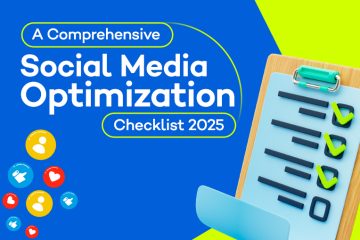For any business or website, understanding user behavior is essential to achieving digital marketing success. One of the key metrics that provide deep insights into how visitors interact with your site is bounce rate. A bounce rate in Google Analytics refers to the percentage of visitors who land on a webpage and leave without interacting with it or visiting any other pages. High bounce rates can be a sign of user dissatisfaction or content that isn’t meeting visitors’ expectations.
For digital marketing companies in India, checking the bounce rate in Google Analytics is an important task. By analyzing bounce rate data, businesses can optimize their websites to enhance user engagement, reduce abandonment, and improve conversion rates. This guide will walk you through how to check bounce rate in Google Analytics, how to interpret the data, and how to use the insights to make improvements on your site.
What is Bounce Rate?
Before diving into how to check the bounce rate in Google Analytics, it’s crucial to understand what bounce rate is and why it matters. In simple terms, bounce rate is the percentage of visitors who enter a website and leave without interacting with any other page. This means they leave after viewing just one page.
Bounce rate is calculated as follows:
While this may sound straightforward, interpreting bounce rate data requires context. High bounce rates aren’t necessarily a problem in all cases. For instance, if you have a blog or landing page where users find the information they need immediately and leave, a high bounce rate might indicate that the page is effectively serving its purpose. However, on e-commerce or service-based websites, a high bounce rate often suggests that visitors aren’t engaging with the site enough to explore other products or services.
Why is Bounce Rate Important?
For digital marketing companies in India, bounce rate serves as an important indicator of how well a website is performing. Here’s why understanding and tracking bounce rate matters:
-
User Engagement: A high bounce rate can suggest poor user engagement. If visitors quickly leave a page, it may be because the content wasn’t appealing or the site design made it difficult for users to navigate.
-
Content Relevance: Bounce rate can help identify content that isn’t resonating with visitors. If users are bouncing from a page quickly, it could be because the content isn’t aligned with their search intent or expectations.
-
Website Performance: Bounce rate can also reflect technical issues like slow loading times, broken links, or poor mobile optimization. If a page takes too long to load, users are more likely to leave without interacting with the content.
By analyzing bounce rate, digital marketing companies in India can pinpoint areas of improvement and optimize the user experience, ultimately increasing the time users spend on the site and improving the likelihood of conversions.
How to Check Bounce Rate in Google Analytics
Checking the bounce rate in Google Analytics is a simple process that requires just a few steps. Follow these instructions to access the bounce rate data for your website.
1. Log Into Google Analytics
The first step is to log into your Google Analytics account. If you don’t have one, you can easily create an account and set up tracking for your website.
2. Select the Property
Once logged in, you will see a list of properties (i.e., websites or apps) associated with your Google Analytics account. Choose the property (website) for which you want to check the bounce rate.
3. Go to the Behavior Section
In the left-hand menu of Google Analytics, locate the Behavior section. This section contains insights into how users interact with your content. Click on Behavior and then select Site Content, followed by All Pages.
4. Locate the Bounce Rate
In the All Pages report, you will see several columns representing different metrics, such as page views, average time on page, and bounce rate. The Bounce Rate column shows the percentage of visitors who landed on a specific page and left without interacting with any other pages.
If you want to check the bounce rate for your entire website, go to the Audience section, and then click on Overview. This will show you an overall bounce rate for your entire website.
5. Adjust the Date Range
To see bounce rate data for a specific period, adjust the date range at the top-right corner of the page. Google Analytics allows you to customize the date range or use preset ranges like “Last 7 Days” or “Last Month.”
6. Use Segments for More Detailed Insights
Google Analytics also allows you to apply segments to analyze bounce rate for specific traffic sources, user demographics, or devices. For example, you can check the bounce rate for users coming from social media versus organic search, or compare the bounce rate for desktop and mobile users.
Interpreting Bounce Rate Data
Once you’ve checked the bounce rate in Google Analytics, the next step is to interpret the data. Understanding the context of your bounce rate is crucial to identifying areas that need improvement. Here are a few important things to keep in mind:
1. High Bounce Rate Doesn’t Always Mean a Problem
A high bounce rate isn’t automatically a negative sign. For example, if the page is designed to provide information quickly (e.g., a blog post or a landing page with a specific goal), a high bounce rate might indicate that users found what they were looking for and left. This is especially true for pages that aren’t designed to keep users on the site longer, like single-page landing pages or blog posts.
2. Industry Benchmarks
Different industries will have different average bounce rates. For example, an e-commerce site may have a bounce rate between 20% and 45%, while blogs or informational sites may see bounce rates of 60% or higher. Comparing your bounce rate to industry benchmarks can give you an idea of whether your website’s performance is on par with others in the same field.
3. Bounce Rate Trends Over Time
It’s also important to monitor how your bounce rate changes over time. If there’s a sudden spike in your bounce rate, it could indicate a problem with the website. This could be caused by a new page design, broken links, slow load times, or an unexpected change in your traffic sources. By monitoring trends, you can identify and fix problems quickly.
4. Bounce Rate by Page Type
Not all pages on your website will have the same bounce rate. A homepage or product page may have a lower bounce rate because users tend to explore other areas of the site. On the other hand, a blog post or a landing page may naturally have a higher bounce rate because users often find the information they need and leave.
To gain a more detailed understanding, review the bounce rates for individual pages. Pages with high bounce rates may require content revisions, better CTAs, or enhanced navigation to encourage further exploration.
How to Reduce Bounce Rate
For digital marketing companies in India, reducing bounce rate is often a key objective. A lower bounce rate generally leads to higher engagement, more page views, and increased conversions. Here are several strategies to help reduce bounce rate:
1. Improve Website Speed
Website load time is one of the most important factors affecting bounce rate. If your website is slow, visitors will likely leave before it even fully loads. Use tools like Google PageSpeed Insights to check the speed of your website and make improvements such as optimizing images, reducing server response time, and using a content delivery network (CDN) to serve content more quickly.
2. Make the Website Mobile-Friendly
More users are accessing websites through mobile devices than ever before. If your site isn’t optimized for mobile, you risk a higher bounce rate. Ensure your website design is responsive, so it adjusts to different screen sizes. A mobile-friendly website enhances user experience and reduces the likelihood of visitors bouncing.
3. Create High-Quality, Engaging Content
Content is one of the main reasons people visit websites. If users don’t find the content relevant or valuable, they will likely leave quickly. Ensure your content meets users’ expectations and addresses their needs. Add multimedia elements like images, videos, and infographics to make content more engaging.
4. Optimize Navigation
Make it easy for users to find what they’re looking for. Ensure that your website’s navigation is clear and intuitive, with easy-to-use menus and a search bar. Well-structured content with internal links also encourages visitors to explore other pages.
5. Use Clear Calls to Action (CTAs)
Encourage users to take action. Whether it’s making a purchase, subscribing to a newsletter, or exploring other pages, having clear, compelling CTAs on your pages can reduce bounce rate and guide visitors through the next steps.
Conclusion
In conclusion, tracking and analyzing bounce rate in Google Analytics is essential for businesses aiming to optimize their online presence. For digital marketing companies in India, checking bounce rate regularly helps assess user engagement and identify areas for improvement. By interpreting bounce rate data effectively, businesses can adjust their strategies to enhance user experience, reduce abandonment, and ultimately increase conversions.
Reducing bounce rate is a continuous process that involves improving website performance, creating engaging content, and optimizing for mobile. With the right tools and strategies, businesses can ensure that their website is not only attracting visitors but also encouraging them to stay and explore further. Additionally, integrating a strong email marketing service into your strategy can complement efforts to re-engage visitors, nurture leads, and reduce bounce rates by providing tailored content that resonates with your audience.





0 Comments